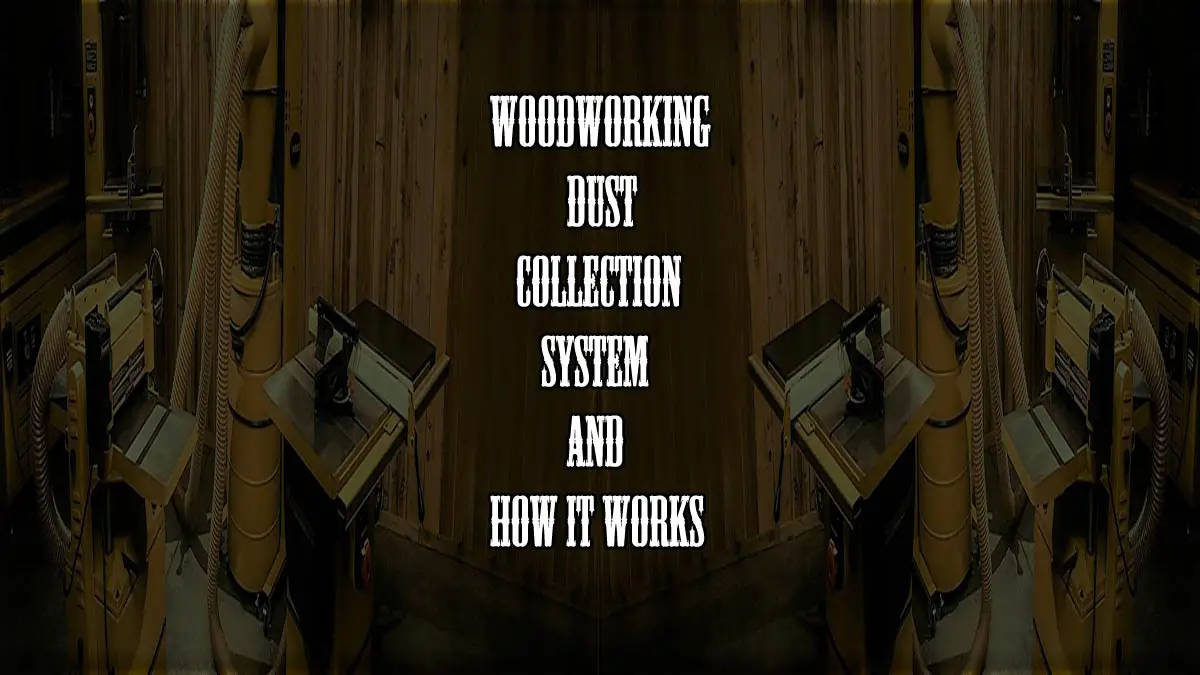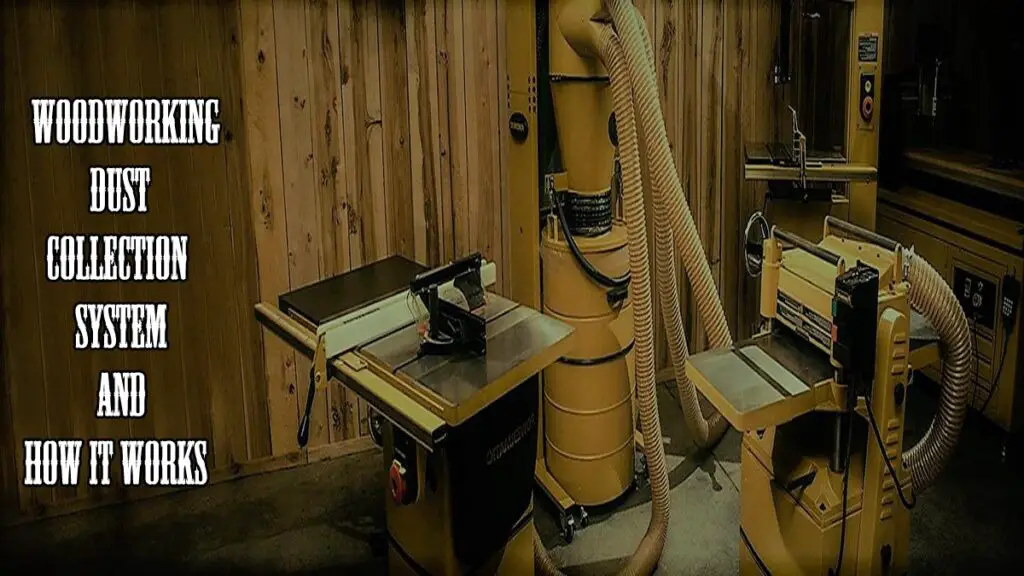
If you are looking for an article on woodworking dust collection system, then this is the article that can fulfill your demand. Basically, this article is all about the woodworking dust collection systems that can help to know the basic information of your query.
Sawdust is one of the most common materials in woodworking shops, if it is not properly regulated and collected, it can rapidly become an annoyance and a health hazard in the workspace.
Dust collection is crucial when working on woodworking projects. Sawdust is a common issue during any project that requires sawing, drilling, routing, planing, and sanding wood. You should have a good dust collection system operating in your workshop to maintain it clean and in good shape and to prevent breathing in these fine sawdust particles.
In this article, we will go over the many techniques, supplies, and tools you’ll need to gather and properly dispose of sawdust from your workshop. In order to prevent you from continuing to overspend on pricey ducting and dust-collecting systems, we will also assist you in making the most cost-effective decision.
Related Article: The 9 Best Woodworking Tools of 2024 for Professionals
You may also read: Best Drill Presses of Recent Models – A Comprehensive Guide

Related Article: Top 7 Best Benchtop Planers of 2024 for Professional Users
You may also read: What Does a Jointer Do? Unlocking Woodworking Secrets
Woodworking Dust Collection System Details
Now we are going to discuss here the woodworking dust collection system and how it works in detail, which will be a helpful guide to operate this process.
Woodworking Dust Collection System
A woodworking dust collection system is a mechanical system that captures and filters out airborne dust particles created during woodworking operations. Typically, a woodworking dust collection system consists of a dust collector, ductwork, and an exhaust fan. The dust collector is typically a large cylinder or box that uses either a mechanical or electrostatic filter to capture dust particles. The ductwork is a system of pipes that transport the dust-laden air from the woodworking machines to the dust collector.
The exhaust fan produces negative pressure within the system, which causes the dust-laden air to flow through the system and into the dust collector. The most common type of woodworking dust collection system is the cyclone dust collector. Cyclone dust collectors work by using centrifugal force to separate the dust particles from the air.
The dust-laden air is fed into the cyclone dust collector through a duct. The ductwork is mounted on the top of the dust collector and has a cone-shaped bottom. The air spins around the cone and the centrifugal force causes the dust particles to be flung out to the sides of the cone. The dust particles then fall down into the dust collector where the filter traps them.
Background Of Dust Collectors
In 1852, an American named S.T. Jones submitted an application for the first dust collector patent, a single bag filter, at a time when businesses were producing large amounts of industrial waste such as fine dust, wood dust, and other particles during the Industrial Revolution. In 1921, Wilhelm Beth, a German inventor, built on Jones’ work by patenting a three-filter dust collector with an emphasis on air and gas filtration.
The reverse air jet system, which revolutionized the air filter business in the 1950s and gave rise to the pulse jet filtration system later that same decade, reduced the complexity of the mechanical components used in air cleaning. Dust collectors are now necessary because of the stricter air quality standards and pollution regulations that have been in place since the 1970s and 1980s. Smaller, cleaner, and more effective sorting and filtering equipment for dust collection are currently being developed by the dust collecting business.
The Fundamentals of Dust Collection
When working with wood, an individual may be exposed to fine dust particles, which could have a negative impact on their health. Because of this, it’s crucial to understand the fundamentals of dust collection and to utilize the right tools when working on projects.
If you wish to maintain a dust-free working environment in your workshop, you should be aware of the following five key concepts.
- In spite of the huge effectiveness of your dust collection system, it probably won’t capture 100% of the dust generated throughout your endeavors.
- A nasal mask is a vital issue of your defense. You can avoid breathing in the last bit of dust in the air in your workshop by using a nose mask that fits properly.
- It’s imperative to use a nasal mask, especially if you don’t already have effective dust collection in place while working outside or at a construction site.
- The most crucial aspect of utilizing a nasal mask is making sure it fits properly. There shouldn’t be any leaks coming from your nose’s side. Wearing it defeats its function if there are any leaks.
- Therefore, be sure to pick a nose mask that adequately fits your mouth and nose area without any gaps which can keep you out of the dust.
Why Dust Collection System Is Important?
A dust collection system is important for a number of reasons. Dust is a nuisance and can be a health hazard, so it is important to keep it under control. Dust can also damage equipment and impair the quality of products. A dust collection system can help to reduce these risks.
Dust is made up of a variety of materials, including tiny particles of metal, rock, and minerals. When these particles are airborne, they can be inhaled, which can lead to a number of health problems. Inhaling dust can cause respiratory problems, and long-term exposure can lead to chronic lung diseases such as emphysema and silicosis. Dust can also aggravate allergies and asthma.
Dust can also damage equipment. It can cause clogging and wear down moving parts. In some industries, such as electronics manufacturing, dust can contaminate products and cause defects.
A dust collection system can help to control dust by collecting it and preventing it from becoming airborne. There are a number of different types of dust collectors, including cyclonic dust collectors, fabric filters, and electrostatic precipitators. The most effective type of dust collector will depend on the type of dust being collected and the application’s specific needs.
Considering Factors To Choose A Woodworking Dust Collection System
There are several factors to consider when choosing a woodworking dust collection system.
- The first is the type of woodworking operation that will be performed. The type of operation will determine the size and type of dust particles that will be produced.
- The second factor to consider is the size of the woodworking shop. The size of the shop will determine the size of the dust collector and the amount of ductwork required.
- The third factor to consider is the type of wood that will be used. Some types of wood produce more dust than others.
- The fourth factor to consider is the budget. Dust collection systems can range in price from a few hundred dollars to several thousand dollars.
When choosing a woodworking dust collection system, it is important to consult with a dust collection specialist. The specialist can help to determine the best system for the specific woodworking operation.
Types of Dust Collection Systems
There are different types of the dust collection system that are available in the market. Each type has its own advantages and disadvantages that should be considered before selecting the most appropriate system for a particular application.
1. Cyclone System
The most common type of dust collection system is the cyclone system. It uses a centrifugal force to separate the dust particles from the air stream. The dust particles are then collected in a container at the bottom of the system. The advantage of this system is that it is relatively inexpensive and easy to maintain. However, the disadvantage is that it is not as efficient in collecting very fine dust particles.
2. Electrostatic Precipitator
Another type of dust collector is the electrostatic precipitator. It uses an electrical charge to attract and collect dust particles. The advantage of this system is that it is very efficient in collecting dust particles. However, the disadvantage is that it is more expensive than the cyclone system.
3. Cartridge Dust Collector
Another type of dust collection system is the cartridge dust collector. Cartridge dust collectors work by drawing the dust-laden air through a series of filters. The filters are typically made of paper or cloth and are housed in a cylindrical cartridge. The air flows through the cartridge from the outside to the inside. As the air flows through the cartridge, the dust particles are trapped on the surface of the filters.
4. Wet Scrubber
The last type of dust collector is the wet scrubber. It uses a water spray to wet the dust particles and then collect them in a container. The advantage of this system is that it is very effective in collecting dust particles. However, the disadvantage is that it requires a constant supply of water.
How to Set Up Woodworking Dust Collection System
Setting up a woodworking dust collection system is a great way to improve the air quality in your shop and protect your lungs from harmful dust particles. There are a few different ways to set up a system, but the most effective is using a central vacuum system. This type of system will require you to purchase a central vacuum unit and a few feet of flexible hose. You will also need to purchase a few adapters to connect the hose to your power tools.
The first step is to determine the location of your central vacuum unit. The unit should be placed in an area that is away from your work area to avoid breathing in the dust that is being collected. Once you have determined the location of the unit, you will need to install the hose. The hose should be installed so that it runs to all of the areas where you will be using power tools.
You will also need to install adapters on the hose so that you can connect it to your power tools. Once the hose is installed, you will need to connect it to your power tools. Each power tool will need its own adapter. Once all of the adapters are in place, you will need to turn on the central vacuum unit. The unit will create suction and will begin to collect the dust from your work area.
You should empty the central vacuum unit on a regular basis to prevent the build-up of dust. You can do this by disconnecting the hose from the unit and emptying the canister into a garbage bag. It is important to wear a dust mask when you are emptying the unit to avoid breathing in the dust.
To know about some effective dust collectors>>>
Conclusion
Woodworking dust collection systems are an important part of any woodshop. They help to keep the air clean and free of sawdust and other airborne particles. There are many different types and sizes of dust collection systems available, so it is important to choose one that is right for your shop. A good dust collection system will make your woodworking projects go more smoothly and help to keep your shop clean and safe.
The woodworking dust collection system is a great way to keep your woodworking shop clean and free of dust. It is a very simple system to install and use, and it will help you keep your shop much cleaner than it would be without it.
Related Article: The 7 Best Hand Planers of 2024 for Professionals
You May Also Read: Top 9 Best DIY Tools to Complete A DIY Project





Effective for woodworking professionals
Thanks. Stay with us.